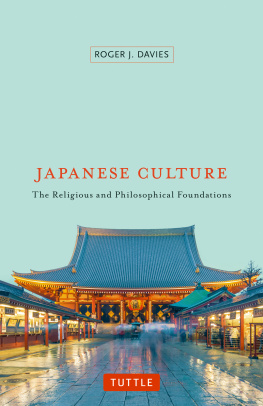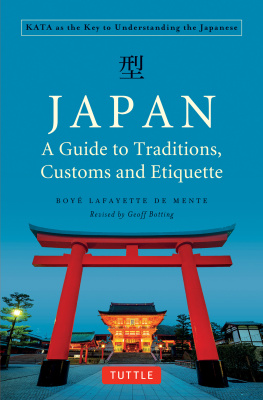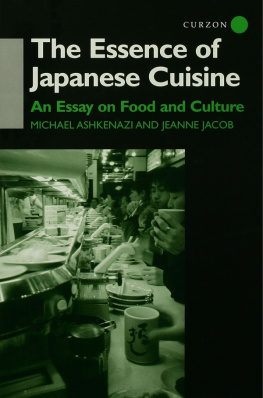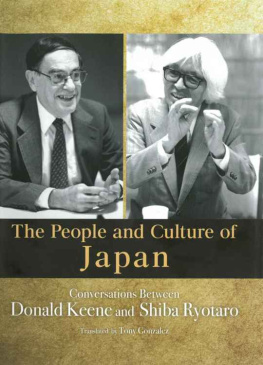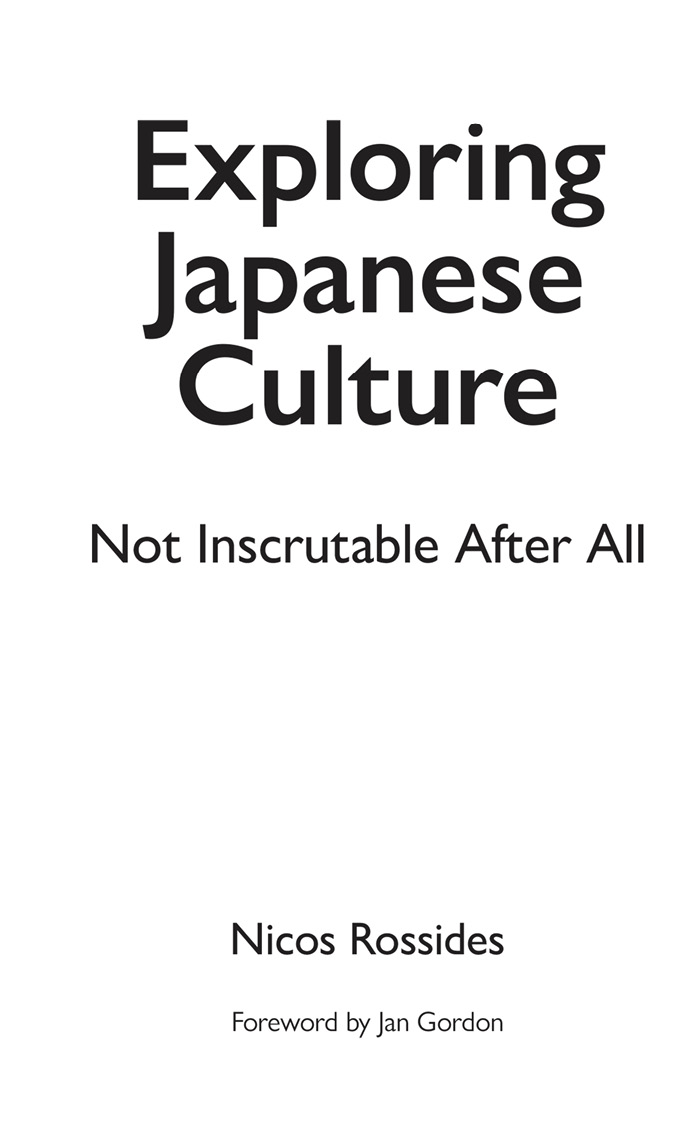Copyright 2020 Nicos Rossides
The moral right of the author has been asserted.
Apart from any fair dealing for the purposes of research or private study, or criticism or review, as permitted under the Copyright, Designs and Patents Act 1988, this publication may only be reproduced, stored or transmitted, in any form or by any means, with the prior permission in writing of the publishers, or in the case of reprographic reproduction in accordance with the terms of licences issued by the Copyright Licensing Agency. Enquiries concerning reproduction outside those terms should be sent to the publishers.
Matador
Unit E2 Airfield Business Park,
Harrison Road, Market Harborough,
Leicestershire. LE16 7UL
Tel: 0116 2792299
Email:
Web: www.troubador.co.uk/matador
Twitter: @matadorbooks
ISBN 9781838595708
British Library Cataloguing in Publication Data.
A catalogue record for this book is available from the British Library.
Matador is an imprint of Troubador Publishing Ltd
Chapter 4
Cool Japan
For many years after Japans defeat in WWII, its image was one of a country populated by hard-working, well-educated, and committed people, willing to make countless sacrifices to catch up with the West. By the mid to late 1960s, the largely impoverished striver image morphed into that of an economic powerhouse, which managed to not only catch up but to outcompete the rest of the world. This particular image may contrast with the creativity and cool that has come to be associated with some facets of modern Japan. Yet, as with many seeming contradictions I pointed to earlier, it makes intuitive sense to those whove lived there.
Joseph Nye, a Harvard University foreign policy expert, speaks of the importance of soft power in international affairs. He sees soft power as the means to success in world politics, underpinned by the ability to attract and persuade rather than force. He contrasts this to hard power, which is based on coercion and grows out of military and economic might (Nye, 2005).
Similarly, Andrew Rose (2015), in his article Like Me, Buy Me: The Effect of Soft Power on Exports, sees soft power in terms of cultural assets. He cites the example of pop star Taylor Swift and Hollywood blockbusters like Star Wars as ways of boosting positive perceptions of America globally, while at the same time increasing demand for related American goods. Countries are always concerned about their image, but the soft power effect has a very tangible commercial pay-off. The Japanese understood this all too well and went about achieving soft power in a way that was methodical and systematic, driven largely from the top (government).
The rise of Japan as a global cultural force, wielding soft power first in Asia and later across the world, happened to coincide with the so-called lost decade of the 90s. It was partly spontaneous but largely plannedthe result, at least in part, of a conscious national branding effort undertaken by the Japanese government. The clear objective was the increase of influence first in Asia, and then globally. This also involved the erasure or repression of considerable hard power exerted by Japan before and during World War II, which had left painful memories in parts of Southeast Asia. The main commercial goals of national branding efforts are typically related to export promotion, inward investment, and tourism. Japans strategy was no different and one could say more purposeful and systematic than most.
In a Foreign Affairs journal article, Peter van Ham (September/October, 2001) discusses the phenomenon of national branding, and makes the point that Smart states are building their brands around reputations and attitudes in the same way smart companies do. In fact, such national branding efforts, and clever positioning, were largely evident in Japans successful bid for the 2020 Olympics (Yano, 2009). They fended off challenges by Madrid and Istanbul by not leaving anything to chance and projecting a strong cultural brand. They even got Prime Minister Shinzo Abe to fly in and, while reinforcing Tokyos strong points, to personally reassure doubters over any health risks from radioactive leaks at the Fukushima power plant. In the final vote against Istanbul, the Japanese won by a wide margin, 60-36.
More recently, the phenomenal success of Marie Kondos book (2014) The Life-Changing Magic of Tidying (which is now a popular Netflix series) was seen by Christopher Harding writing in the New York Times (January 18, 2019) as heir to a long tradition whereby Japan is marketing itself as a spiritual foil to a soulless West. In fact, the title of the opinion piece, Marie Kondo and the Life-Changing Magic of Japanese Soft Power, frames Kondos success as an example of the nations soft power on the global stage:
Japans mission in the worldshould be to succeed where the West had evidently failed: creating a form of modern life that integrates technological with spiritual progress, rationality with intuition and emotion, individualism with a deep feeling for community. As exports went, it beat geisha dolls and paper umbrellas.
In fact, the notion of Ikigai (a word that combines the ideograms for life and worth or value) can also throw some light on this philosophical perspective. Loosely translated as reason for being it resonates with those of us who seek more spirituality in an existence that unfolds at a frantic pace and has allowed technology and material wants to overshadow the need for fulfillment, balance and spirituality.
Marie Kondo speaking at the 2016 RISE conference in Hong Kong.
(Photo by RISE, Wikimedia Commons CC BY 2.0)
Japanese Food
Ive already talked about Japanese food in the context of my broad discussion on Japanese aesthetics. In this lens, as it pertains to Japans cultural clout across the world, it is one of the most potent symbols of Japanese cultural influence, especially sushi . Of course, Japanese food isnt only sushi. Many (but certainly not most) Japanese restaurants have become successful despite not emphasizing sushi or sashimi on their menus. Wagamama , for instance, became immensely popular by specializing in a range of wholesome and simple dishes, including noodles and curries in restaurant formats that are based on the concept of casual dining especially appealing to the young and health-conscious. Having said that, some Wagamama franchises across the world could not resist the pressure of including some sushi dishes in their menu.
Despite the success of non- sushi based menus such as Wagamamas , the fact is that sushi has caught on the world over. Indeed, it coincided and therefore managed to leverage the healthy food trend in the West, and became popular with both young and old. Sushi s origins can be traced to 3rd century A.D. Chinese writing, which detailed the use of fermented rice as a practical way to preserve fish. The dietary limits of Buddhism helped sushi spread to Japan, as people chose fish instead of meat.
Sushi preparation changed drastically over the centuries, with the pickling levels decreasing before ending altogether and swapped for fresh, raw fish. By the 1920s, nigiri sushi was served all over Edo (modern-day Tokyo). Refrigeration allowed it to spread around Japan by the 70s, while it began to make inroads across the Pacific.




